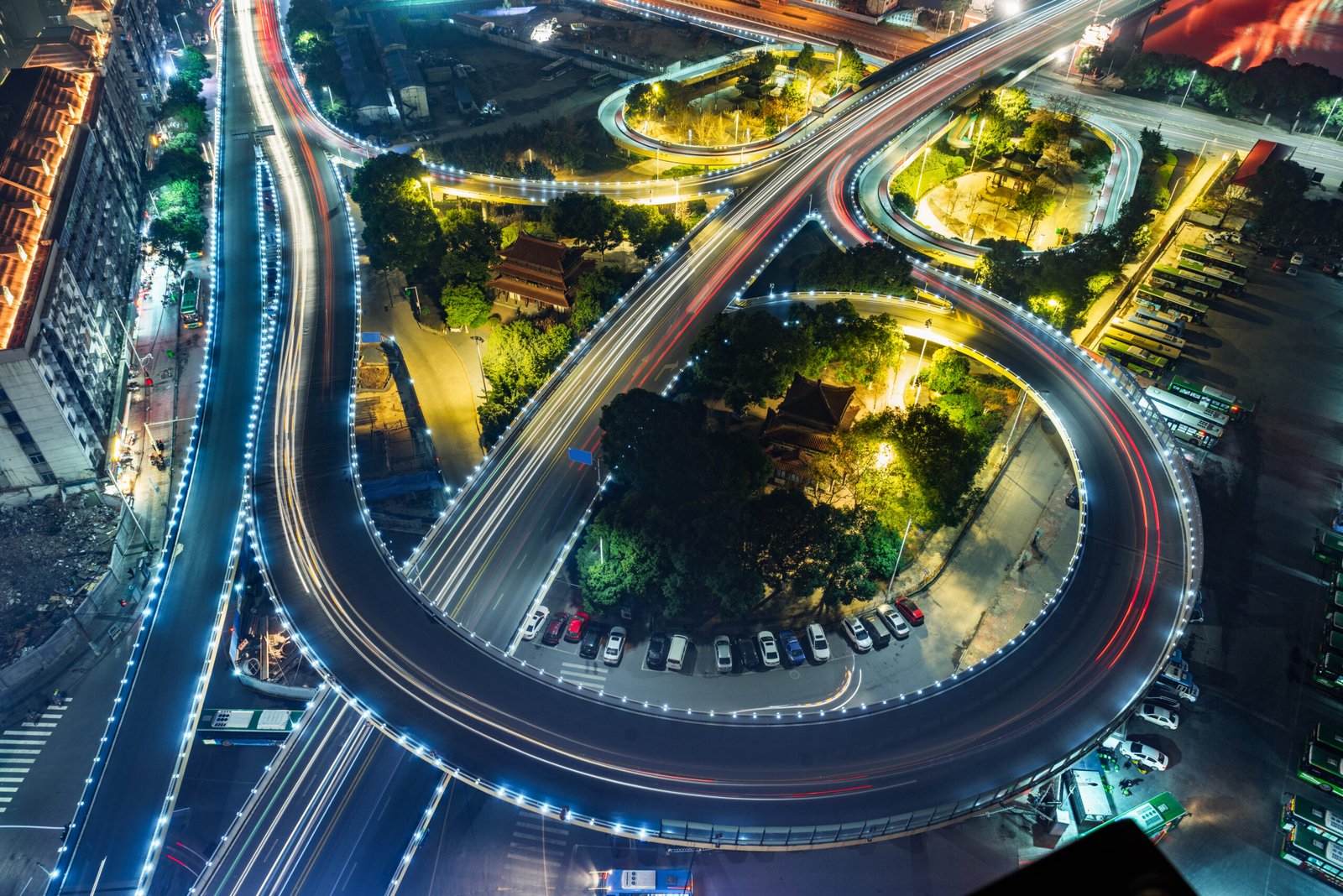The Impact of Global Traffic Technologies

Urban populations and car counts have been growing exponentially, hence traffic congestion is a daily issue for every city across the world. Traffic managers and urban designers are always seeking fresh and innovative ideas to help with these continually rising challenges. Here we have Global Traffic technology, a revolutionary approach using modern technology including artificial intelligence (AI) and the internet of things (IoT) to totally overhaul urban transport management.
How specifically, though, are these technologies altering our cities? This article explores traffic management and the contribution Global Traffic Technologies has had in forming it using historical background, present patterns, and possible future advancements.
Introduction to Global Traffic Technologies
Advanced technologies and techniques meant to maximize traffic flow in cities make up Global Traffic Technologies (GTT). These systems enhance traffic control using modern technologies including real-time analytics, artificial intelligence, IoT, and data integration.
These systems seek to solve inefficiencies in conventional traffic management systems by simplifying traffic patterns, thus lowering congestion, increasing safety, and so improving sustainability in metropolitan settings.
Key Features of Global Traffic Technologies:
- Real-time traffic monitoring and control
- Predictive analytics to anticipate congestion
- AI-powered dynamic traffic signal systems
- Vehicle-to-Everything (V2X) communication for seamless data exchange
The Evolution of Traffic Management
One must first know the background of traffic management before investigating the revolutionary influence of Global Traffic Technologies. Decades ago, paper route maps and fixed-timing traffic lights dominated the static systems used in transportation. Although these methods were sufficient for their day, urban development and population increase revealed their flaws.
Traditional traffic management faced significant challenges, including:
- Increased travel times due to traffic congestion
- Limited ability to respond to real-time incidents or emergencies
- Inefficient utilization of road infrastructure
This growing demand for smarter traffic solutions drove the emergence of technologies designed to make urban mobility more intelligent and efficient.
How Global Traffic Technologies Are Shaping Urban Mobility
GTT is reshaping urban mobility through smarter, more efficient traffic systems. By integrating technologies like AI and IoT, these solutions optimize traffic flow, reduce accidents, and save fuel.
Advantages of Global Traffic Technologies
- Analyzing real-time traffic data allows these systems to quickly change traffic signals to help to reduce congestion.
Dynamic systems lower the chance of accidents, therefore offering drivers, bikers, and pedestrians safer mobility.
Priority signals for buses and emergency vehicles guarantee timely and effective transportation, therefore enhancing public transit efficiency.
Long-term cost benefits for cities come from lowering fuel use and delays, therefore saving
For example, Singapore and Copenhagen are already benefiting from smart traffic lights that adjust dynamically to current traffic volumes.
The Role of AI and IoT in Traffic Optimization
Global Traffic Technologies’ foundation is the way IoT and artificial intelligence are included into traffic systems. These technologies used together provide very sophisticated traffic control systems with real-time condition adaptation.
Artificial intelligence (AI) by use of historical pattern analysis and live data can forecast and control traffic flow. To reduce traffic, for example, AI systems dynamically change signal timings and assist pinpoint optimal travel times.
Internet of Things (IoT) helps linked devices—including traffic cameras, sensors, even cars—communicate with one another. This guarantees quick decision-making and issue response by allowing real-time data to be smoothly flowing to a centralized management system. By combining these technologies, cities can create “smart intersections” where traffic flows adapt instantly to meet current demands, reducing both travel time and emissions.
Case Studies of Global Traffic Technologies in Action
To illustrate the effectiveness of Global Traffic Technologies, let’s explore a few real-world examples.
1. Singapore’s Smart Mobility Initiative
Singapore has embraced GTT through its network of smart traffic lights and dynamic routing systems. This system continuously monitors traffic patterns and adjusts signals to optimize flow, significantly reducing average travel times.
2. Los Angeles’ Automated Traffic Management Center
Los Angeles employs an advanced management center that integrates data from cameras, sensors, and weather stations. By dynamically adjusting signal timings, LA has seen reduced congestion and improved commute times for its residents.
3. Copenhagen’s Green Wave for Cyclists
With “Green Wave” technology, Copenhagen gives bicycles top priority. To promote environmentally friendly transportation, traffic lights along important bicycle paths are changed to give cyclists riding at consistent speeds a constant flow.
These illustrations show how GTT improves the urban commuting experience and show its worth in several environments.
Environmental Impact and Sustainability
Global Traffic Technologies’ help to promote environmental sustainability is among their most important advantages. By lowering stop-and–go traffic, fuel use, and encouraging greener forms of transportation like cycling and public transit, these systems dramatically lower emissions.
Environmental Benefits
- Lower carbon emissions from optimized traffic flow
- Support for eco-friendly initiatives, such as pedestrian-friendly zones and cycling lanes
- Reduced noise pollution in urban areas
However, sustainability efforts must address challenges, such as the energy consumption of AI algorithms and IoT devices. Developing energy-efficient technologies will be crucial in ensuring the long-term viability of GTT in supporting urban sustainability.
Future Trends and the Outlook for Global Traffic Technologies
What chances lie ahead for Global Traffic Technologies? These are some basic ideas most likely influencing the industry in coming years.
Integration of autonomous cars
Self-driving cars are not far off, hence GTT will be fairly crucial in properly controlling traffic involving both ordinary and autonomous autos.
Predictive Maintenance driven by Artificial Intelligence
Future GTT systems will use artificial intelligence to predict infrastructure wear and tear, therefore ensuring improved traffic flow and enabling proactive maintenance.
5G Connectivity Instant Transmission
The implementation of 5G networks will provide faster, more consistent data flow that will aid IoT devices to optimize traffic system optimization.
These advances show enormous potential, but problems such data privacy and system compatibility also have to be addressed.
Value of Using Creative Traffic Solutions
In terms of city transport network management, Global Traffic Technologies mark a major breakthrough. These fixes greatly improve environmental sustainability and safety in addition to traffic flow.
Urban Planning Expert Dr. Emily Liu underlines, “Global Traffic Technologies offer a smarter, more efficient way to manage traffic, so transforming urban mobility.”
Cities may greatly raise the quality of living for their citizens by implementing creative technology and giving sustainable urban development top priority. To guarantee that the cities of the globe remain livable, safe, and efficient for next generations, stakeholders have to aggressively promote and apply these developments.
Whether your interests are technology, traffic management, or urban planning, Global Traffic Technologies provide amazing chances to change the direction of mobility. Time to act is right now.


